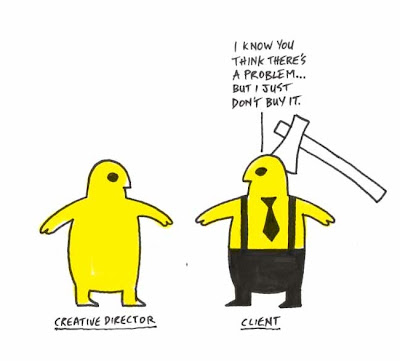Introduction
Almost every creative person aspires to hold the top job some day. Unfortunately, there is very little guidance out there for them and many fledgling Creative Directors crash and burn within their first year. The reason for this, I believe, is that many creative people are thrust into the job because of their ability to produce outstanding work, with no regard for their ability to be a manager.
Creative ability and managerial ability are two very different skill sets. To be a good Creative Director, you need to have both. And as many of us in the creative business know, most creative people are deficient in the latter.
A few years ago, a friend of mine was promoted to Creative Director. He was literally having kittens at the prospect of taking on his new role and started to quiz me endlessly about every aspect of the job.
I told him I would write down the things I’ve learned over the years. What he should strive to achieve and the pitfalls he should avoid.
Hence this book.
He found the advice useful. And although he found the transition from Senior Art Director to Creative Director painful, with a little time and a little insight, he grew into the role and became successful at it.
So, if you’re about to become a Creative Director, or aspire to be one some day, I hope this book helps you make the transition with as little distress as possible.
Part 1:
The job of a Creative Director is to inspire
Back in 2003, a couple of days before Christmas, I flew down to Australia for an interview with Bob Isherwood, the Worldwide Creative Director for Saatchi & Saatchi.
I was being asked to take the Regional Creative Director job in Asia.
Bob took me through some of the work done by the network, shared his philosophy on advertising and told me why Saatchi was the best agency for me to join.
At some point during our discussion, we got onto the topic of creative leadership. And it suddenly occurred to me that I had forgotten to ask him an important question. “What is the role, in his view, of a Creative Director?”
He mused for a couple of seconds, looked me in the eye, and replied “To inspire.”
I’d never heard the definition of a Creative Director put so simply before. But I knew instinctively that he was spot on.
***
Ultimately, a Creative Director has to ensure great work comes out of his agency - and he can only do that by inspiring people. First and foremost he has to inspire his creative teams to go beyond the expected and produce something original. He has to inspire the planners to write great strategies. And he has to inspire the Account Service team to get on board with the idea and ensure they are excited enough to sell it to their client.
But when we talk about inspiration, what do we actually mean? What is it about a person that makes them either inspiring or uninspiring?
First, it’s important to remember that there is no magic formula. Inspiration isn’t a text book technique or process that can be mechanically implemented throughout a company. Inspiration is sparked by a certain breed of person, individuals who have the ability to ignite a vision and purpose in others.
In my experience, these people are highly driven and have a ‘never say die’ attitude. They share key values and traits.
1. They have a vision
Inspiration starts with a goal. People need to know and be told what they’re aiming for. They also need to believe in the cause. The people that inspire always have a clear goal. They live and breathe that goal day in, day out. And they get their people to breathe it, too.
2. They have ability
You can’t inspire in a creative industry if you don’t have talent. That’s because the very act of creating your own work is the most powerful way to inspire other creative people. More than that, the people who have a talent for spotting original and ground-breaking work are those who have a knack for creating it themselves.
3. They are honest with feedback
People who inspire tell it as it is. They don’t hold back to protect someone’s feelings. Creative teams cannot create great work if their boss doesn’t give them feedback on how to improve it.
However, it’s important to give feedback in a positive way. Many fledgling Creative Directors feel they have to verbally beat up their creative teams to get the best out of them. I’ve always found this approach counter-productive. Bullying tactics demoralize your team. It’s better, in my view, to use the carrot rather than the stick.
4. They have energy
Inspiring people have enormous amounts of energy. And find it easy to energize everybody around them. They walk around their department getting actively involved with people. Chatting with them, cajoling them and giving feedback on the work. They are people who instill fun and liveliness into their agencies.
5. They have eternal optimism
Nothing can dampen the optimism of an inspiring person. When they get knocked down, they bounce right back. Their optimism is infectious. And it motivates all around them to bounce back too.
6. They have humility
The best creative leaders aren’t braggarts. They usually have enormous amounts of humility. And although they take credit for the overall success of the agency, they don’t steal the limelight from their people. Nothing gets a creative team down more than a Creative Director who takes credit for the work they’ve produced. An inspiring leader let’s his people take the glory. He praises them in public forums, in front of clients and in press articles.
7. They want to win








